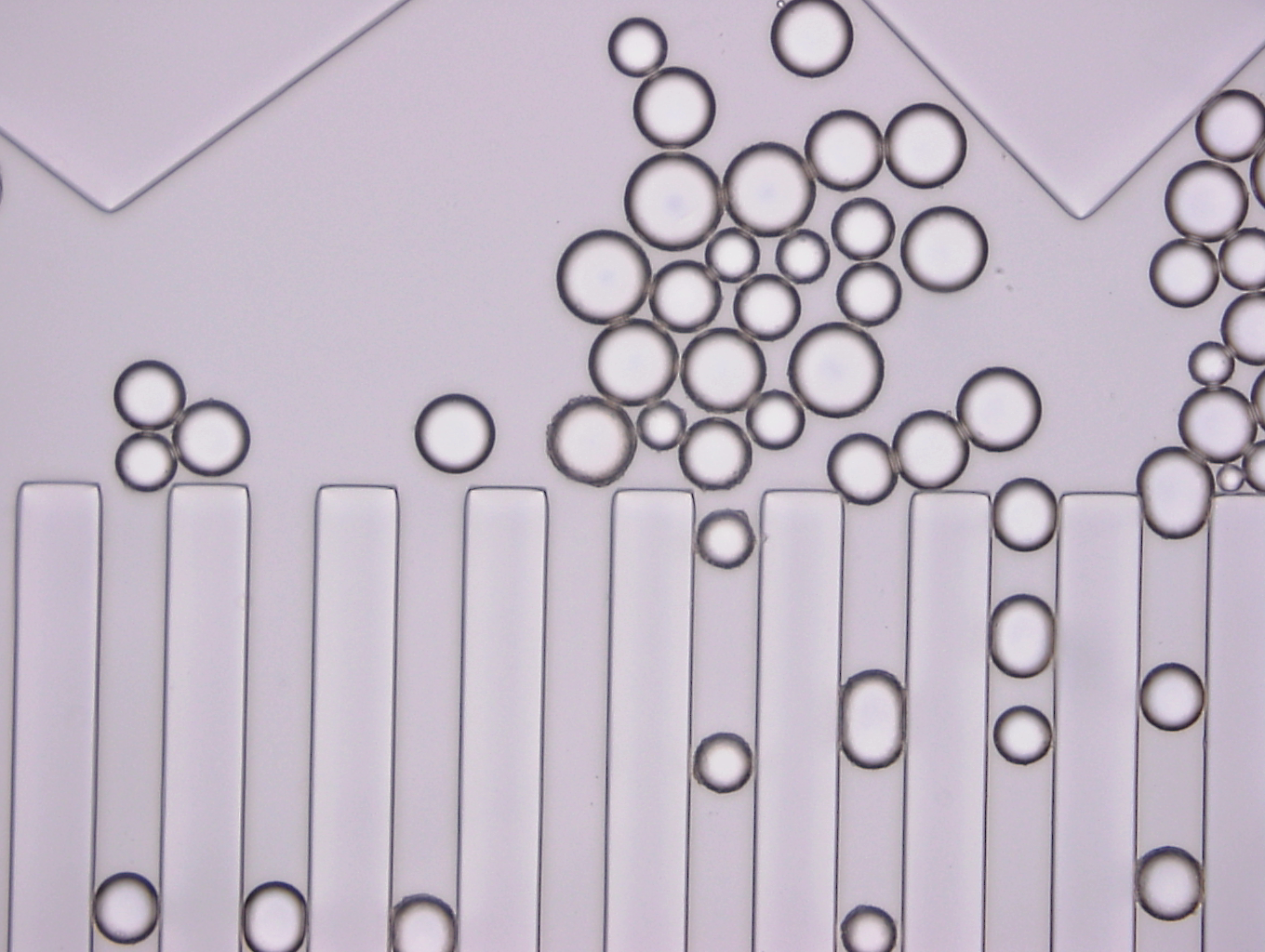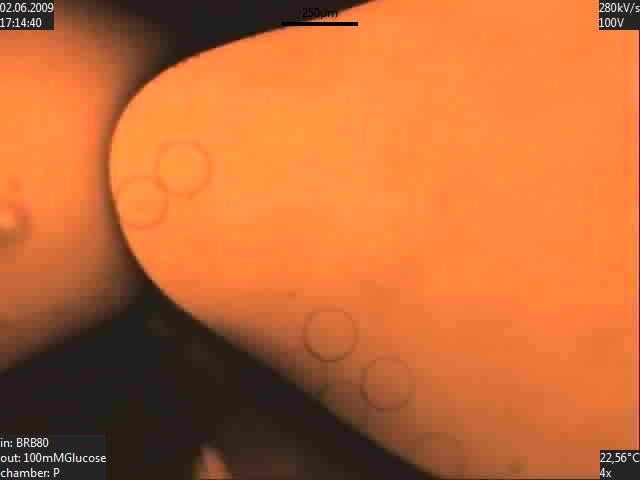Team:BIOTEC Dresden/Results Vesicles
From 2009.igem.org
m (Results Vesicles moved to Team:BIOTEC Dresden/Results Vesicles) |
|||
| Line 2: | Line 2: | ||
=== Lipid Vesicles === | === Lipid Vesicles === | ||
| - | ''First approach: Microjetting'' | + | '''First approach: Microjetting''' |
| - | Our | + | Our initial idea was to make GUVs shooting aqueous material through a lipid bilayer using a microjetting setup (principle similar to blowing soap bubbles). |
[[Image:Our_1st_GUVs.jpg|300px]] | [[Image:Our_1st_GUVs.jpg|300px]] | ||
| - | + | Unfortunately, this method turned to be not reliable techically and the GUVs produced were not stable time wise and had broad size distribution. | |
| - | ''Second approach: Mixing in Microfluidic Chamber'' | + | '''Second approach: Mixing in Microfluidic Chamber''' |
| - | A microfluidic chamber that created an intersection between aqueous and oil phases produced vesicles that were uniform in size and stable for up to 5 hours. The vesicles are stabilized by a surfactant, | + | A microfluidic chamber that created an intersection between aqueous and oil phases produced vesicles that were uniform in size and stable for up to 5 hours. The vesicles are stabilized by a surfactant, Span 80. |
| Line 21: | Line 21: | ||
The video shows first see the part of the chamber where aqueous and oil phases meet. Oil flows from left to right in the channel that appears colorless. Two channels that carry material in the aqueous phase meet (this area is not visible in the image) and lead downwards towards the oil channel. The vesicles created are lead towards a network of channels that break the vesicles into smaller vesicles and eventually into a grid that stores them. | The video shows first see the part of the chamber where aqueous and oil phases meet. Oil flows from left to right in the channel that appears colorless. Two channels that carry material in the aqueous phase meet (this area is not visible in the image) and lead downwards towards the oil channel. The vesicles created are lead towards a network of channels that break the vesicles into smaller vesicles and eventually into a grid that stores them. | ||
| + | |||
<html> | <html> | ||
<object width="425" height="344"><param name="movie" value="http://www.youtube.com/v/iq1ZRdI3eto&hl=en&fs=1&"></param><param name="allowFullScreen" value="true"></param><param name="allowscriptaccess" value="always"></param><embed src="http://www.youtube.com/v/iq1ZRdI3eto&hl=en&fs=1&" type="application/x-shockwave-flash" allowscriptaccess="always" allowfullscreen="true" width="425" height="344"></embed></object> | <object width="425" height="344"><param name="movie" value="http://www.youtube.com/v/iq1ZRdI3eto&hl=en&fs=1&"></param><param name="allowFullScreen" value="true"></param><param name="allowscriptaccess" value="always"></param><embed src="http://www.youtube.com/v/iq1ZRdI3eto&hl=en&fs=1&" type="application/x-shockwave-flash" allowscriptaccess="always" allowfullscreen="true" width="425" height="344"></embed></object> | ||
Revision as of 13:14, 21 October 2009
Lipid Vesicles
First approach: Microjetting
Our initial idea was to make GUVs shooting aqueous material through a lipid bilayer using a microjetting setup (principle similar to blowing soap bubbles).
Unfortunately, this method turned to be not reliable techically and the GUVs produced were not stable time wise and had broad size distribution.
Second approach: Mixing in Microfluidic Chamber
A microfluidic chamber that created an intersection between aqueous and oil phases produced vesicles that were uniform in size and stable for up to 5 hours. The vesicles are stabilized by a surfactant, Span 80.
In the figure below vesicles are led into a grid by funnel shaped structures in the flow chamber (top).

The video shows first see the part of the chamber where aqueous and oil phases meet. Oil flows from left to right in the channel that appears colorless. Two channels that carry material in the aqueous phase meet (this area is not visible in the image) and lead downwards towards the oil channel. The vesicles created are lead towards a network of channels that break the vesicles into smaller vesicles and eventually into a grid that stores them.
{{:Team:BIOTEC_Dresden/NewTemplateEnd}} "
"
